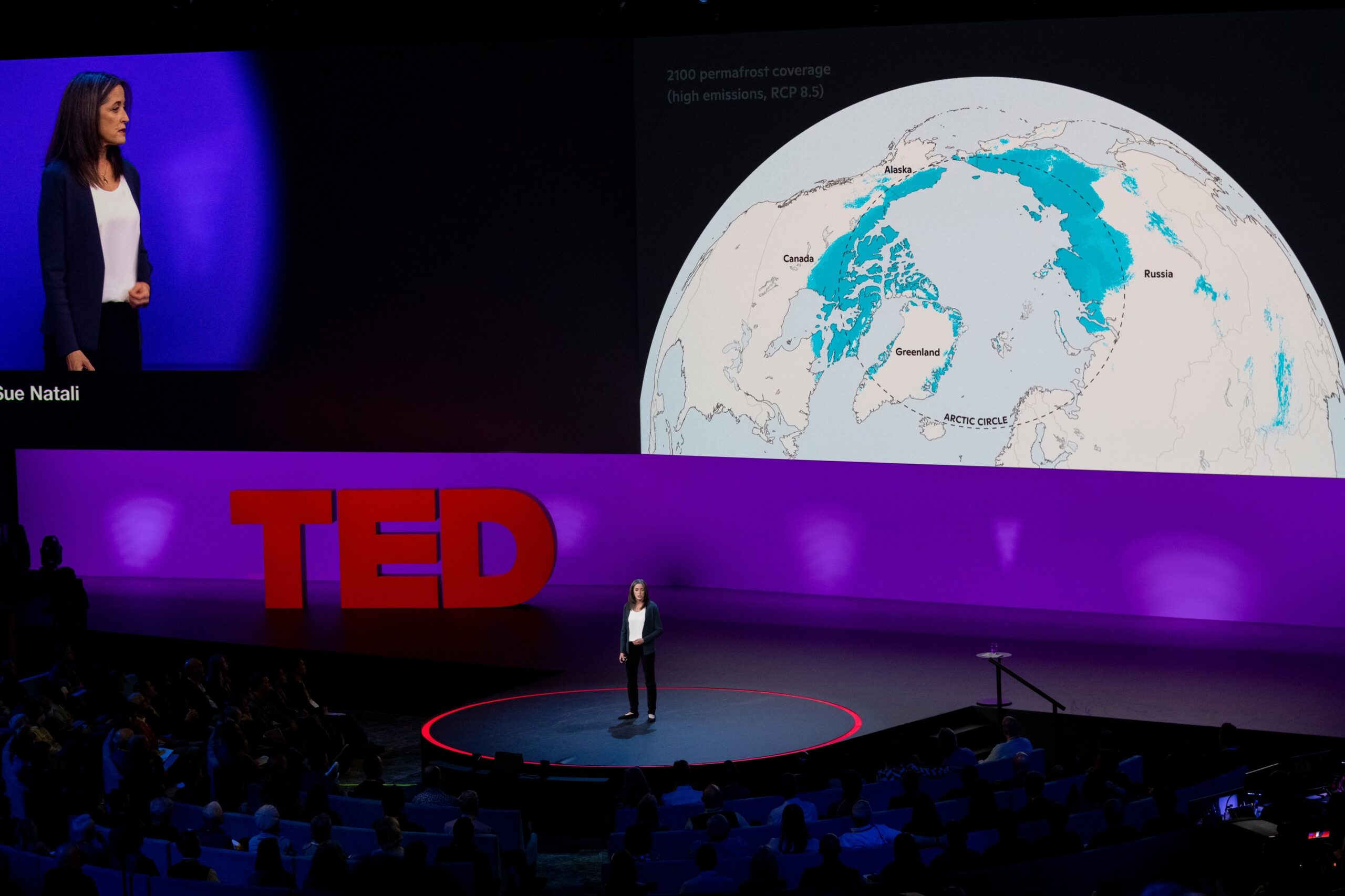Permafrost Pathways celebrates six months
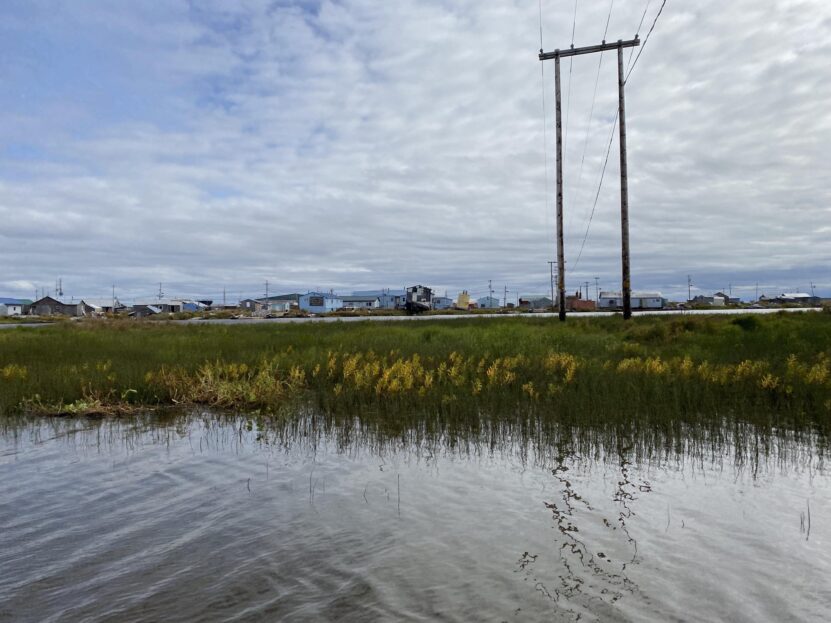
Arctic Communications Specialist, Woodwell Climate Research Center
Here’s what the project has been up to since it launched in April 2022
Six months ago, with funding through the TED Audacious Project, we launched Permafrost Pathways—a new multidisciplinary project connecting science, people, and policy for Arctic justice and global climate—along with our partners at the Arctic Initiative at Harvard Kennedy School, the Alaska Institute for Justice, and the Alaska Native Science Commission.
On Monday, April 11, 2022, Woodwell Climate Research Center’s Dr. Sue Natali took to the stage at the TED2022 annual conference in Vancouver to introduce Permafrost Pathways. With poised urgency, Dr. Natali delivered a powerful speech highlighting the compounding threats that Arctic communities and our global climate face due to thawing permafrost. Her passionate delivery of such a critical message was met with a standing ovation and has now been viewed more than one million times—even comedic actor and writer Rainn Wilson shared Dr. Natali’s talk on Twitter.
Monitoring and Modeling
The Permafrost Pathways project made substantial progress during its first field season. Woodwell’s Dr. Kyle Arndt and Patrick Murphy, working with Dr. Sue Natali, installed a new eddy covariance flux tower in Churchill, Manitoba, Canada. This is the inaugural tower of Permafrost Pathways—which aims to coordinate a pan-Arctic carbon monitoring network to fill data gaps that have hindered integration of permafrost thaw emissions and impacts into climate targets and adaptation governance.
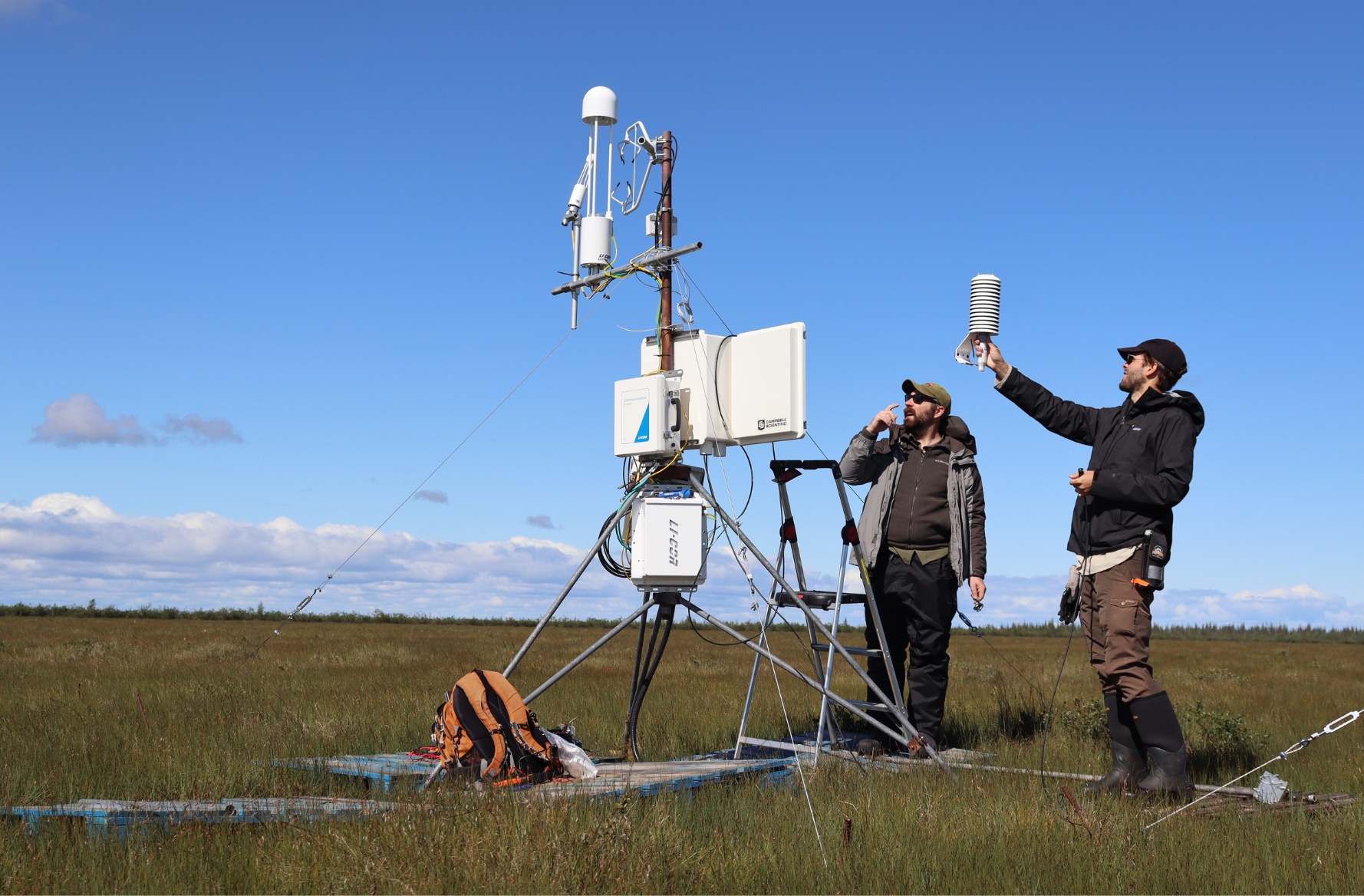

Tower installations in Churchill, Manitoba, and Scotty Creek, Northwest Territories. Photos by Jessica Howard and Joëlle Voglimacci-Stephanopoli.
The project also supported five additional existing eddy covariance sites across Canada by providing instrumentation and/or technical support to ensure these existing towers continue to collect data and to expand their measurement capacity to include both carbon dioxide and methane measurements throughout the year.
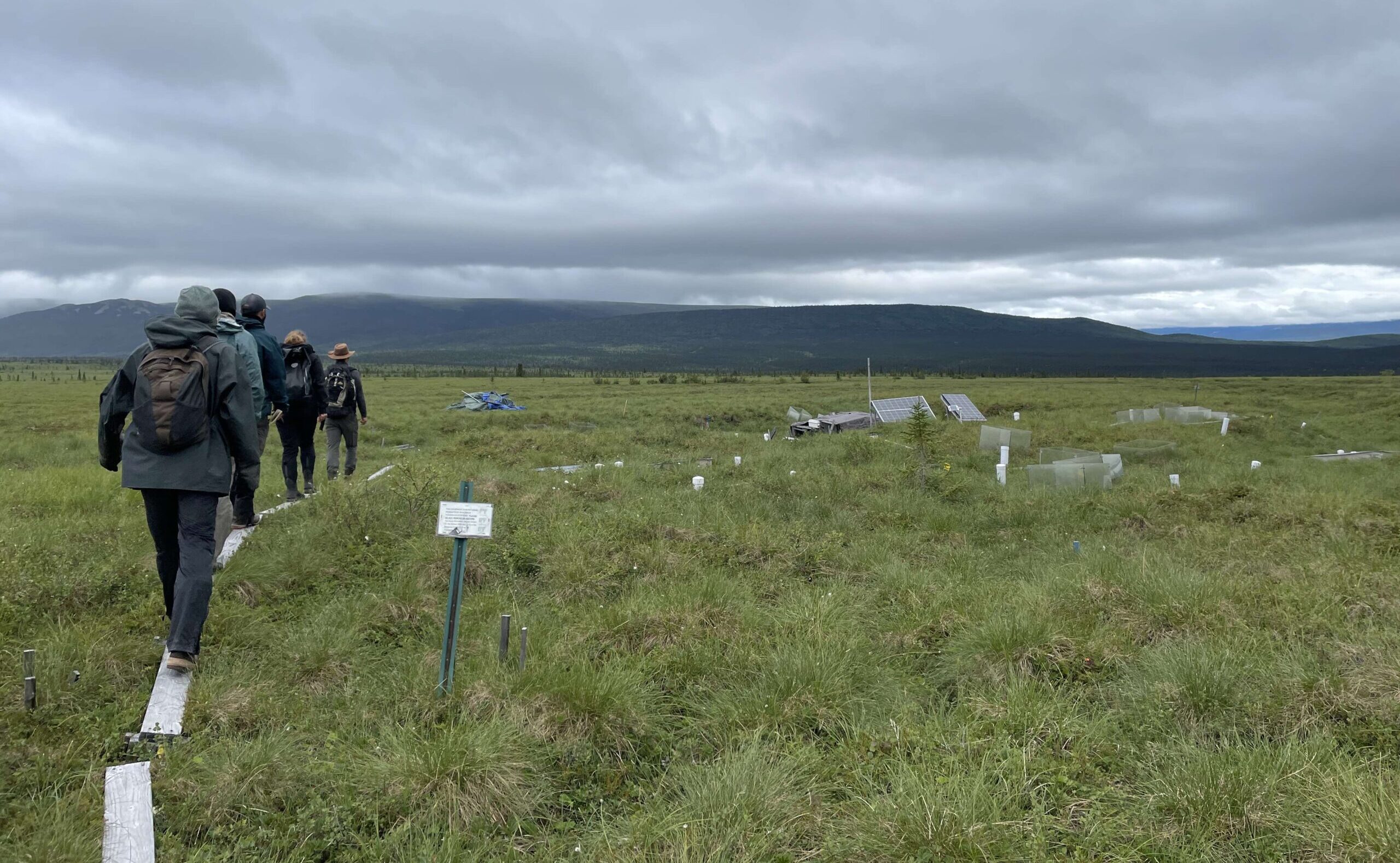
Monitoring team in Alaska. Photo by Valeria Briones.
The Permafrost Pathways modeling team, led by Woodwell’s Dr. Elchin Jafarov, has started building the necessary infrastructure to handle the massive computational task of modeling and predicting carbon fluxes from thawing permafrost across the Arctic and boreal regions. Developing the model’s capacity to represent wildfire, abrupt thaw, and carbon fluxes in different Arctic ecosystems will provide better historical assessments, near-term forecasts, and longer-term projections under various policy scenarios that will allow us to track the changing landscape and more accurately project future emissions from permafrost thaw.
Adaptation Strategies
In September, Woodwell’s Dr. Sue Natali and the Alaska Institute for Justice’s Dr. Robin Bronen and Ben Baldwin traveled to Alaska to meet with Tribal liaisons in Kuigilnguq/Kwigillingok and Nunapicuaq/Nunapitchuk to collect water samples and install permafrost monitoring equipment. Both Alaska Native villages are severely impacted by permafrost thaw, erosion, and flooding, and are making difficult decisions about how they will adapt to the rapid and hazardous changes happening in their communities.
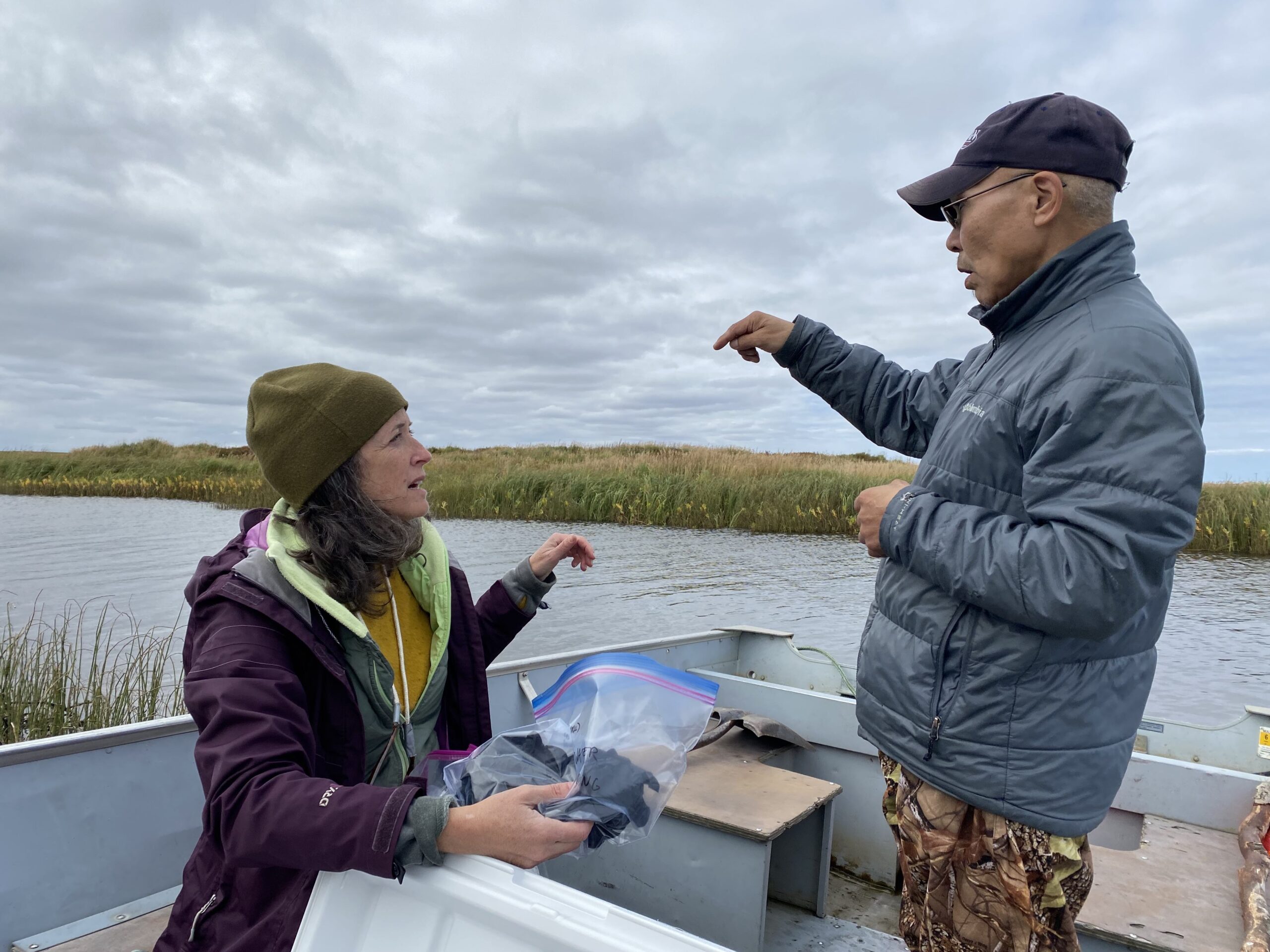
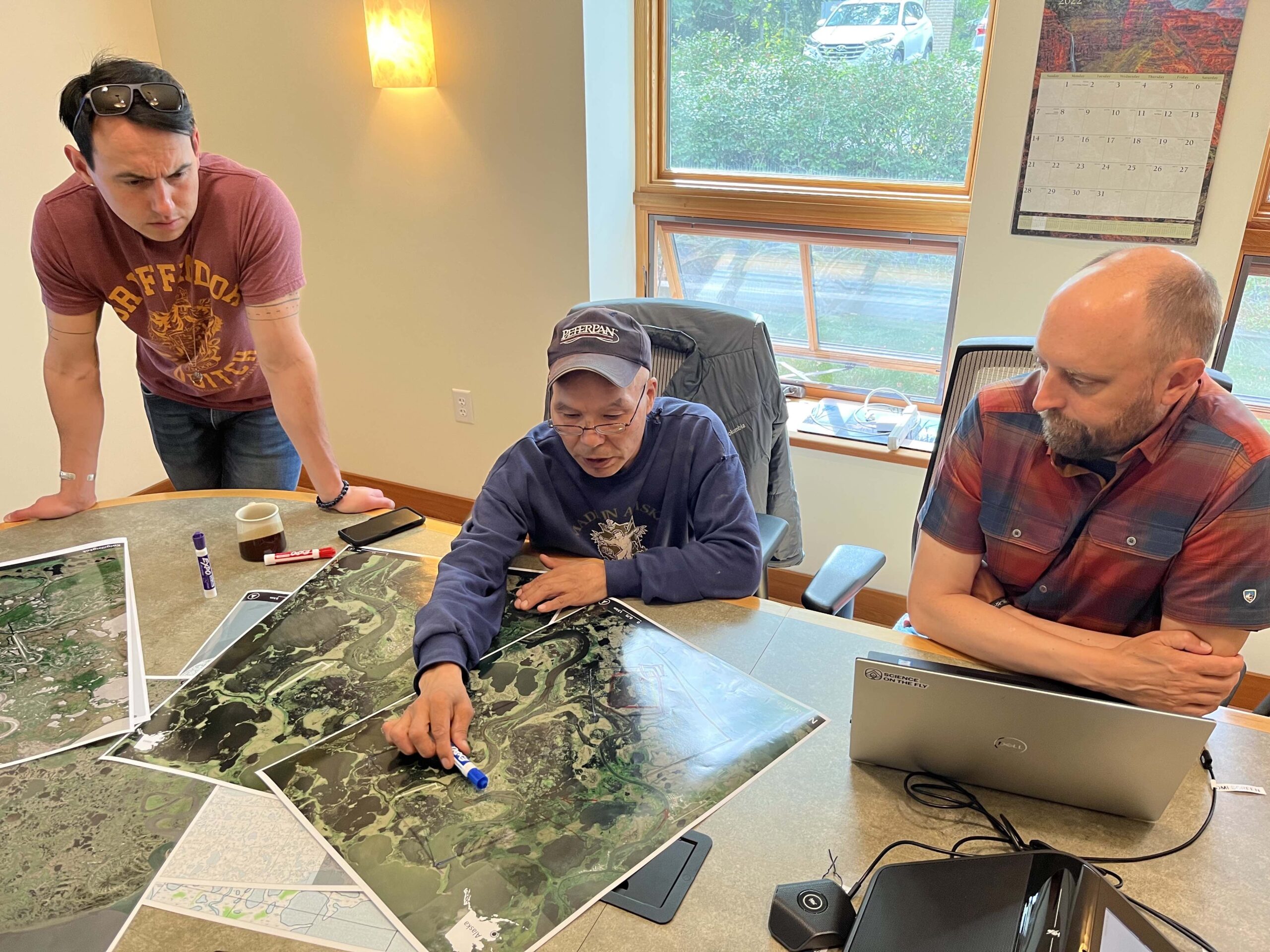
September visits to Nunapicuaq/Nunapitchuk, Alaska and the Woodwell Climate Research Center. Photos by Rachael Treharne and Sue Natali.
In late September, the Permafrost Pathways team hosted the Alaska Institute for Justice and Kuigilnguq/Kwigillingok and Nunapicuaq/Nunapitchuk Tribal liaisons at Woodwell Climate Research Center in Massachusetts for an Indigenous-led adaptation strategy workshop. Kuigilnguq/Kwigillingok and Nunapicuaq/Nunapitchuk are two of four Alaska Native community partnerships established over the past six months, which now also include Cingik/Siŋik/Golovin and Cev’aq/Chevak.
Mitigation Policy
In June, Dr. Rachael Treharne and Melissa Shapiro of the Permafrost Pathways policy team attended the 56th session of the Subsidiary Body for Scientific and Technological Advice (SBSTA) and Subsidiary Body for Implementation held in Bonn, Germany. During the conference, Dr. Treharne joined the Bolin Center for Climate Research at Stockholm University and the Inuit Circumpolar Council Canada for the International Climate Cryosphere Initiative’s (ICCI’s) live streamed press event urging governments to account for emissions from permafrost thaw as they work towards the Paris Agreement goals.
During that same week, Brooke Woods from the Permafrost Pathways policy team attended the National Congress of American Indians (NCAI) Mid-Year Conference and Marketplace in Anchorage, Alaska. NCAI provided attendees, which included Tribal leaders, Native youth, and partners from across Indian country, with an opportunity to work collaboratively to protect and enhance tribal sovereignty with the theme of “Thinking Beyond Self-Determination.”

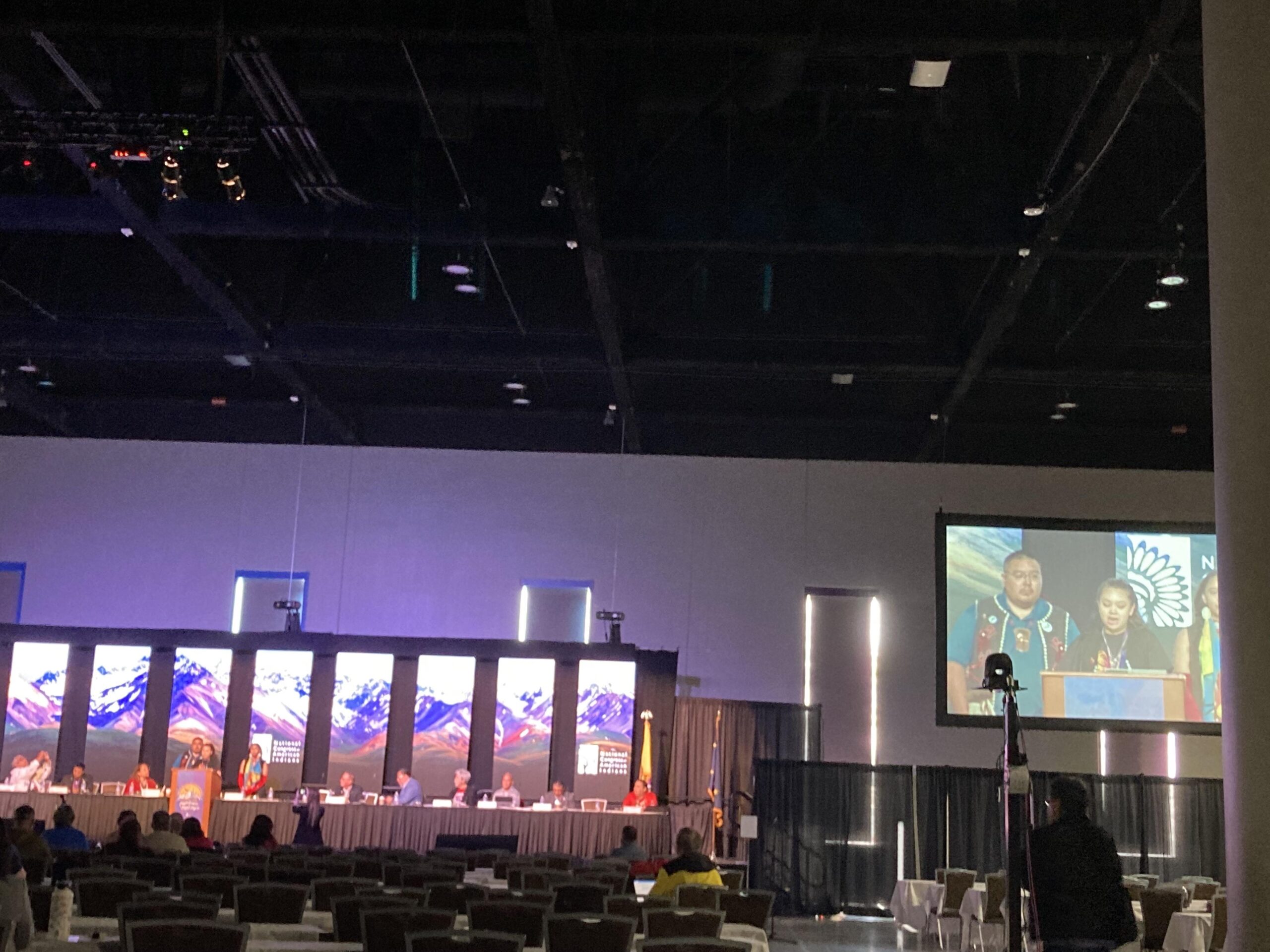
UNFCCC in Bonn, Germany and NCAI in Anchorage, Alaska. Photos by Melissa Shapiro and Brooke Woods.
On Tuesday, September 20, 2022, Dr. Sue Natali testified to the House Committee on Science, Space, and Technology on the subject of strengthening science to respond to a rapidly changing Arctic. Dr. Natali made the case for more Congressional support for conducting more extensive permafrost science and for Alaska Native tribes to coproduce knowledge and lead climate change research.
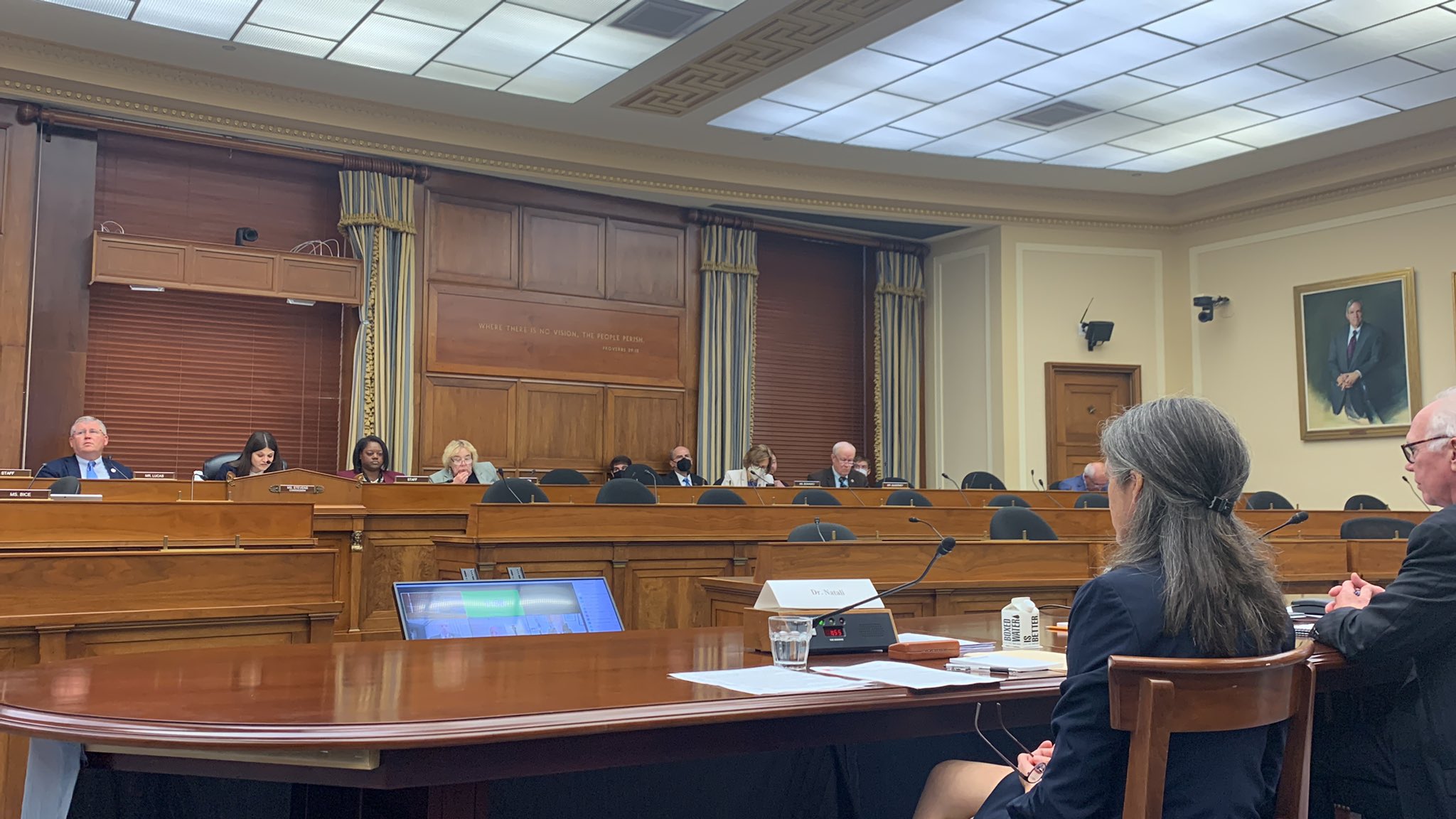
Dr. Sue Natali testifying to the House Committee on Science, Space, and Technology. Photo by Dave McGlinchey.
On September 26 and 27, 2022, Permafrost Pathways partners at the Arctic Initiative at Harvard Kennedy School hosted a convening at Harvard University. The Permafrost Pathways team was joined by representatives from federal agencies, Alaska Native communities and organizations, and Arctic science institutions. The meeting was an opportunity for invitees to learn about Permafrost Pathways, offer their thoughts about the challenges and opportunities at the intersection of permafrost science and policy, and consider possibilities for collaboration.
Looking ahead, Permafrost Pathways will be hosting two sessions at the Arctic Circle Assembly in Reykjavík, Iceland this week and will also have a presence in the Cryosphere Pavilion at COP27 in Sharm el-Sheikh, Egypt in November.
Publications and media highlights
Several members of the Permafrost Pathways team have been co-authors on new publications and featured in media outlets including the New York Times, Alaska Public Media, and Time Magazine. Need to catch up? Explore our stories page or check out our six-month publication and media roundup below:
Publications
- Frontiers in Environmental Science
- Nature Climate Change
- Human Ecology
- Ecology and Society
- NYU Review of Law and Social Change
- Environmental Research Letters
- Nature Communications
Media coverage
- New York Times
- Arctic Today
- Alaska Public Media | Talk of Alaska
- Alaska Public Media | Alaska Insight
- Time Magazine | Quick Talks
- The Carbon Copy
Stay connected—sign up for Permafrost Pathways email updates and follow us on Instagram and Twitter.
Go to top


